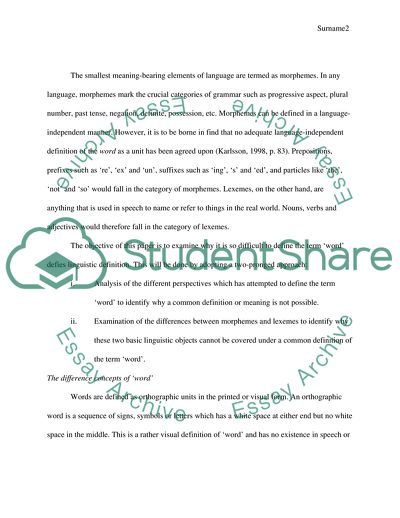Cite this document
(The Problem of Defining Word Coursework Example | Topics and Well Written Essays - 3000 words, n.d.)
The Problem of Defining Word Coursework Example | Topics and Well Written Essays - 3000 words. https://studentshare.org/english/1710481-what-do-we-mean-by-a-word-identify-problems-for-the-positing-of-a-definition
The Problem of Defining Word Coursework Example | Topics and Well Written Essays - 3000 words. https://studentshare.org/english/1710481-what-do-we-mean-by-a-word-identify-problems-for-the-positing-of-a-definition
(The Problem of Defining Word Coursework Example | Topics and Well Written Essays - 3000 Words)
The Problem of Defining Word Coursework Example | Topics and Well Written Essays - 3000 Words. https://studentshare.org/english/1710481-what-do-we-mean-by-a-word-identify-problems-for-the-positing-of-a-definition.
The Problem of Defining Word Coursework Example | Topics and Well Written Essays - 3000 Words. https://studentshare.org/english/1710481-what-do-we-mean-by-a-word-identify-problems-for-the-positing-of-a-definition.
“The Problem of Defining Word Coursework Example | Topics and Well Written Essays - 3000 Words”. https://studentshare.org/english/1710481-what-do-we-mean-by-a-word-identify-problems-for-the-positing-of-a-definition.


